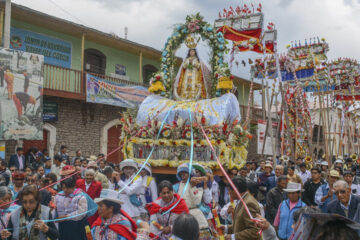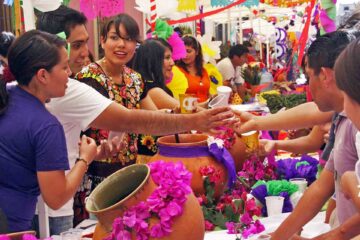El Día de la Samaritana: A Beautiful Oaxacan Tradition of Water, Faith, and Community
Every year, on the fourth Friday of Lent, the streets of Oaxaca come alive with color, music, and the sound of clay jugs being filled with refreshing drinks. Known as El Día de la Samaritana, this beautiful tradition is one of the many reasons Oaxaca remains so deeply connected to its faith, community, and Indigenous roots.
I remember hearing about this celebration from my dad, who grew up in Oaxaca. He described walking through the city streets as a young boy, holding a handmade clay cup while sampling aguas frescas from stands set up outside churches, businesses, and even family homes. Back then, he didn’t fully understand the story behind the celebration — he just knew it was a day of joy, refreshing drinks, and connection with his neighbors. Today, I see Día de la Samaritana as a perfect example of how Mexican traditions blend faith, history, and community in a way that’s truly special.
The Story Behind El Día de la Samaritana
At its core, El Día de la Samaritana is inspired by the biblical story of Jesus and the Samaritan woman at the well, found in the Gospel of John. In the story, Jesus asks the woman — a Samaritan — for water. This moment is significant because, in those times, Jews and Samaritans didn’t interact. Yet Jesus speaks to her with kindness, offering her “living water” — a symbol of salvation and eternal life.
Oaxaca took this biblical moment and turned it into a celebration of hospitality, where people open their doors (and their hearts) to share water, flavored drinks, and conversation with anyone who passes by. Over time, it became tradition to serve not just water, but aguas frescas — traditional Mexican drinks made with fruits, seeds, or flowers — beautifully displayed in large clay pots.
A Tradition Rooted in Oaxaca’s Identity
While you might hear about small Día de la Samaritana events in other parts of Mexico, it’s in Oaxaca where the tradition truly thrives. The city’s colonial streets and Indigenous heritage make it the perfect setting for such a celebration.
Days before the event, you’ll find families preparing recipes passed down for generations — horchata topped with walnuts and cantaloupe, chilacayota (a sweet squash-based drink), jamaica, tamarindo, and more. Local markets sell clay cups just for the occasion, because drinking from barro somehow makes everything taste more authentic.
What I love most about this tradition is how it transforms the city for one day. Schools, businesses, and government buildings participate. Stands are decorated with palm leaves, colorful flowers, and religious images. And in true Oaxacan fashion, music and community are at the heart of it all.
Aguas Frescas with a Deeper Meaning
At first glance, it might seem like Día de la Samaritana is just about enjoying free drinks, but there’s a deeper meaning. Sharing water or an agua fresca becomes symbolic — it’s an act of kindness, of welcoming the stranger, of reminding everyone that we are all deserving of care and hospitality.
In many ways, this tradition also reflects the values of Indigenous Oaxacan culture, where community and collective well-being are prioritized. Offering water — the most basic yet most essential resource — is a gesture of unity and respect, especially during Lent, a season focused on reflection and preparation.
Experiencing the Celebration Firsthand
Although I haven’t experienced Día de la Samaritana in Oaxaca myself (yet), hearing my dad’s stories made me feel connected to it. I picture walking down those cobblestone streets, stopping at every stand to sip a new flavor, watching as locals and tourists alike share smiles and conversations.
What stands out about Oaxaca is how traditions like these aren’t created for show or tourism — they’re rooted in everyday life. For Oaxaqueños, it’s not just about handing someone a drink. It’s about pausing for a moment in our busy lives to recognize our shared humanity.
Keeping Traditions Like Día de la Samaritana Alive
In today’s fast-paced world, it’s easy to lose touch with traditions, especially those that aren’t as commercialized or well-known outside their regions. But it’s celebrations like this that remind us of the beauty of small, meaningful moments.
If you ever get the chance to visit Oaxaca during Lent, make it a point to experience this tradition. Don’t just grab a drink and go — take the time to talk to the people serving it, learn about the recipe, and reflect on the deeper meaning behind the gesture.
And if you’re like me — watching from afar — maybe there’s a way to honor the spirit of Día de la Samaritana in your own community. Share an agua fresca with a neighbor, volunteer your time, or simply practice small acts of kindness. After all, the heart of this tradition is about connection — something we could all use a little more of.
Have You Experienced El Día de la Samaritana?
I’d love to hear your stories or see your photos from this beautiful celebration. If you’ve ever been in Oaxaca for Día de la Samaritana, share your experience through my Share Your Story Form — you might be featured in an upcoming post!
What’s your favorite agua fresca? Let me know in the comments!


